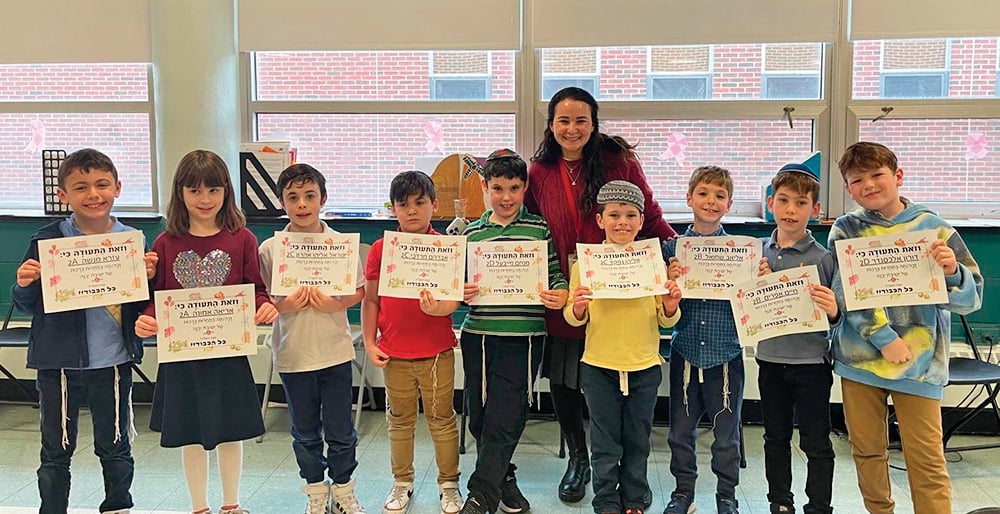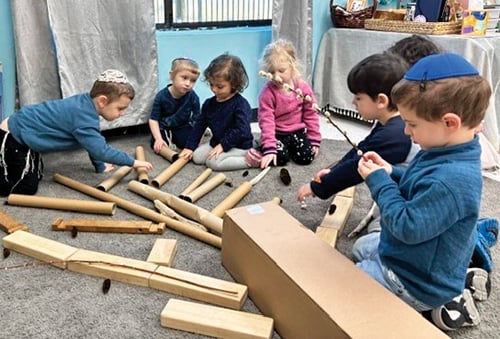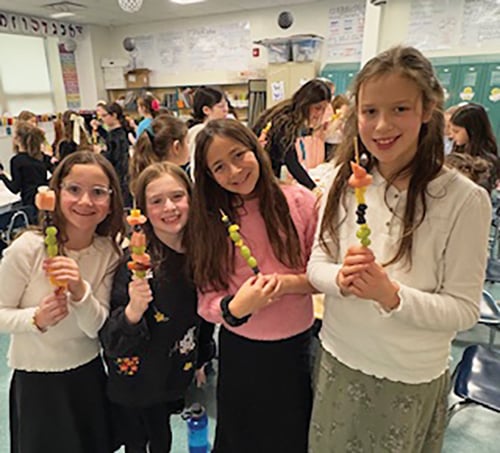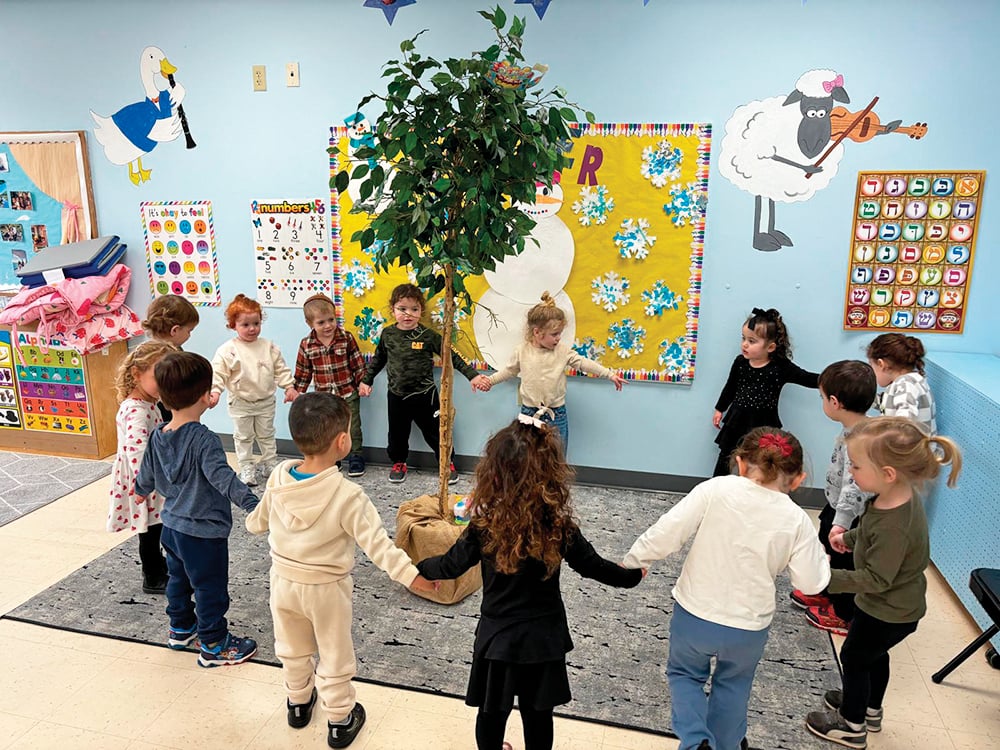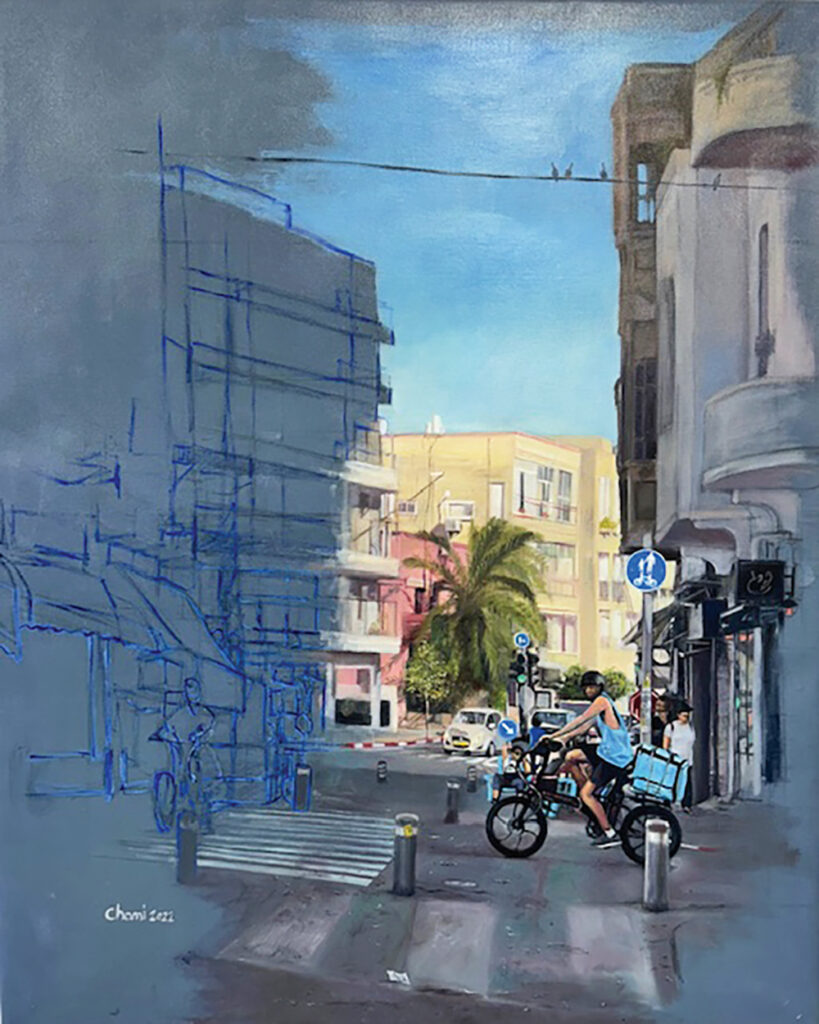
From Meah Shearim to Teaneck and back to Israel, artist Chomi Groman has led a very interesting life. It was a pleasure sitting down to discuss her journey as as Jew and as an artist. Her work blends tradition with contemporary experiences and the result is a beautiful collection of paintings. Chomi’s collection is currently available for purchase at 198 The Plaza Gallery in Teaneck.
Jennie Mohl: Can you tell us about how your personal background has influenced your work?
Chomi Groman: Of course! I grew up in a very traditional community, the Neturei Karta, in Mea Shearim, Jerusalem. This community is deeply focused on separation from modern society, which had a big impact on my upbringing. We spoke only Yiddish at home. I was one of seventeen children in a family that followed strict traditions, and for a long time, my world felt very confined. Art was not a part of the community’s focus, but it was something I loved from an early age. I think my art now reflects a mixture of that traditional upbringing and my desire to connect with broader, more contemporary experiences. It’s a way for me to express both my roots and my growth, bridging those two worlds.
Jennie: You also mention a transformative journey in your life that led to the creation of a series of paintings. Could you tell us about that turning point and how it influenced your work?
Chomi: The turning point came when my family and I began to question the restrictions of the community we lived in. After marriage, we started a family, but over time, we realized we wanted more for our children. We wanted to offer them a broader education, one that would include subjects like math, English, and classic world literature. This eventually led to us leaving the community and moving to the United States, where my husband, Yoel, accepted a postdoctoral position at Columbia University. It was a huge shift for us—physically, emotionally and intellectually. My children attended Mayanot, BPY and the Idea School. Despite being in a new environment and learning two new languages, we all felt “at home” in Teaneck. We chose that area because we heard there were some Israelis living there and we were looking for a Modern Orthodox community where we could go to shul and go to college. It was during that time, as we settled into a new life, that I created a series of paintings of colorful glass cups.
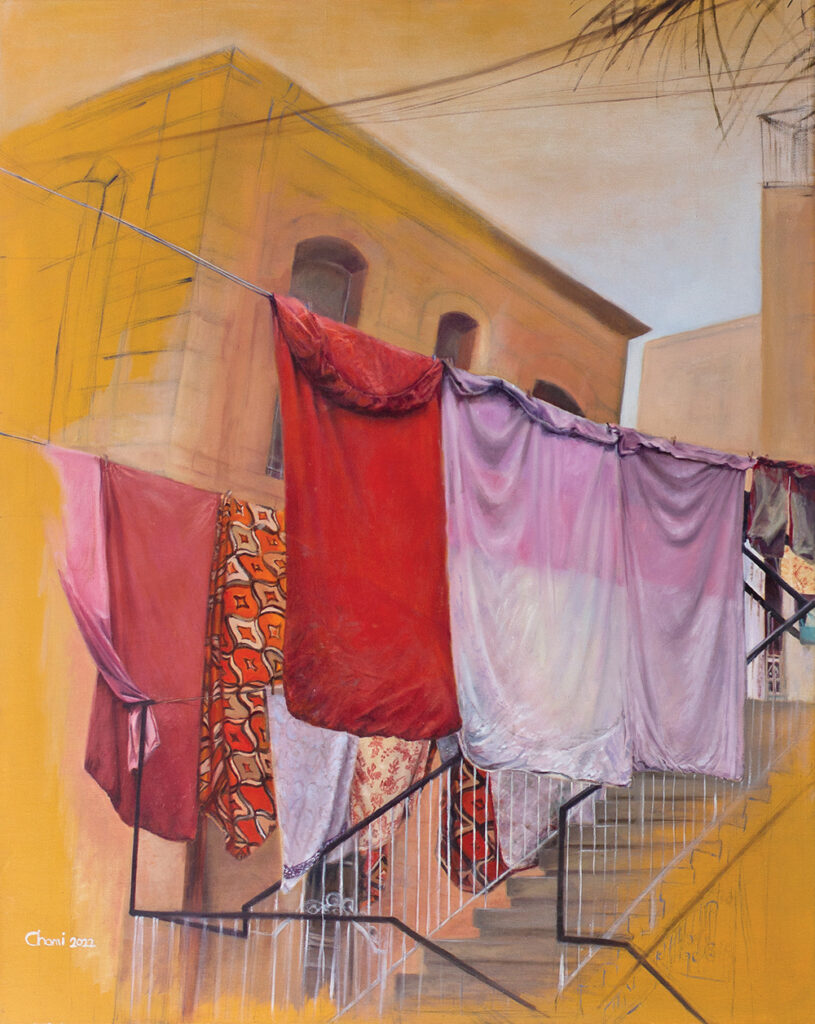
Those glass cups seem to hold deep symbolic meaning for you. Can you tell us more about their significance in your art?
Yes, they really do. The glass cups represent a kind of freedom and vibrancy that I had been longing for. When we first arrived in Teaneck, New Jersey, we were settling into our new life, and I set the Shabbat table with some glass cups we had received from members of the community. They were mismatched, but their colors brought a kind of lightness and joy that stood out in contrast to the constraints I’d left behind. I felt that the cups symbolized a new chapter for me—one where I could embrace both my heritage and my individual desires. Over time, these cups became a recurring theme in my artwork. I started collecting glassware, arranging it by shades, and painting colorful still lifes. The cups became a symbol of individuality and diversity, which is something I deeply value now.
It sounds like your art is a way for you to express your personal journey. How would you describe your creative process and the way you approach your paintings?
My creative process is very intuitive, but it’s also deeply influenced by my personal experiences. I’ve always loved working with different mediums, but I didn’t have the opportunity to study art formally until much later in life. After leaving the community, I enrolled in the Avni Institute in Tel Aviv, where I trained under Maestro Gustavo Venezuela. It was there that I began developing my personal style—one that combines classical techniques with my own modern sensibility. I work primarily with watercolors, which I find are perfect for capturing the lightness and transparency of glass. There’s something about the way watercolor allows me to express softness and fluidity that feels very much in line with how I view my own journey.
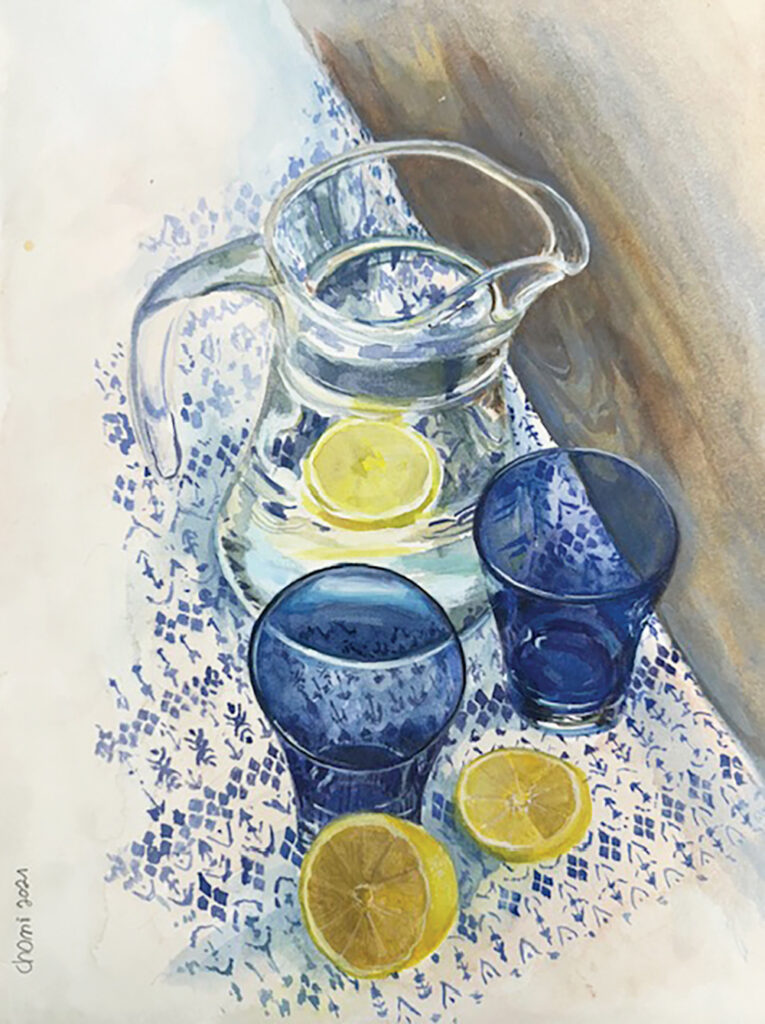
You’ve mentioned that you’ve lived in different places, including Israel and the United States. How has this experience of living in different cultures influenced your perspective on art and your identity?
Living in different places has definitely broadened my perspective, both as an artist and as a person. Although I was born in Israel, I often feel like a stranger here. Hebrew isn’t my first language, and I have an accent that makes people ask where I’m from. That feeling of being an outsider allows me to view Israel with fresh eyes, and it also informs my art. I try to express in my paintings the continuity of Jewish tradition, but also how it coexists with a modern, contemporary experience. My time in the United States helped me appreciate how diverse and complex the world is, and I try to bring that into my artwork—showing both the beauty of tradition and the excitement of individuality.
You’ve come a long way, both personally and artistically. What are you currently working on, and what are your future goals?
Right now, I continue to paint and sell my work. I also teach classical drawing, which is something I’m very passionate about. I love working with students and helping them understand the fundamentals of art. In terms of my future goals, I’m always looking to push my artistic boundaries. I want to explore new themes and techniques, possibly incorporating more abstract elements into my work. I also hope to exhibit more of my paintings and share my journey with a wider audience. For me, art is about connection—connecting with my own story and with others through the emotions and messages my work conveys.

It’s clear that your art has a deep emotional and personal significance. What message do you hope people take away when they experience your work?
I hope that my work can speak to the beauty of individuality and the importance of embracing change. I believe that everyone has their own unique journey, and my paintings reflect that diversity. I also want my work to communicate the idea that tradition and modernity can coexist—they’re not mutually exclusive. We can hold on to our roots while also growing and evolving. If viewers walk away feeling inspired or reflective, then I feel like I’ve done my job as an artist.
Jennie’s gallery is located at 198 The Plaza in Teaneck between Palisade Ave. and Queen Anne Rd. It features the artwork of more than 25 Israeli artists. www.jenniemohlart.com
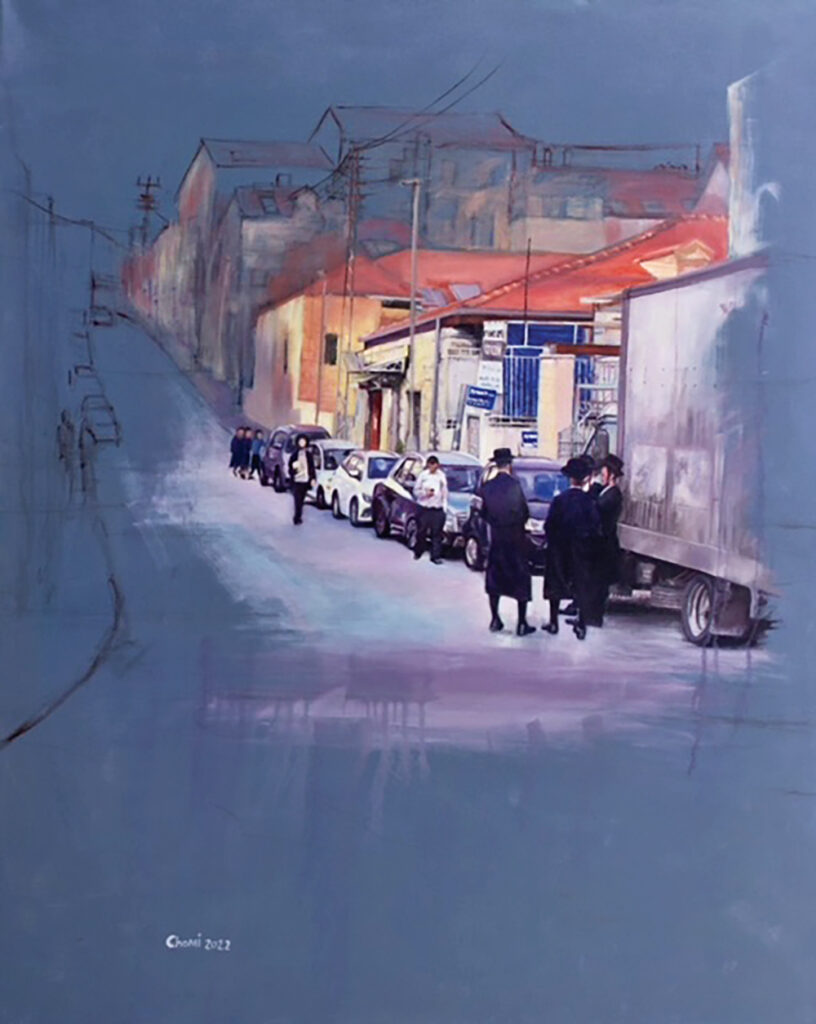
Jennie Mohl is an art consultant specializing in Judaica and Israeli artwork. For more information about Hayun and other artists, email [email protected] or call (917) 573-7074.




